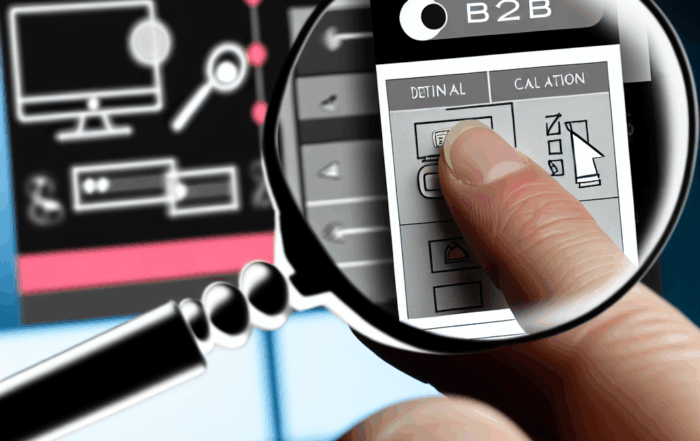What You’ll Learn
- The Importance of a Strong First Impression
- User Experience and Functionality in Small Business Web Design
- Why Mobile Responsiveness Is Essential
- The Role of Branding in Web Design
- SEO Essentials for Small Business Websites
- Driving Conversions Through Web Design
- Web Design as a Growth Engine for Small Businesses
The Importance of a Strong First Impression
Your website often serves as the first point of contact between your business and potential customers. In fact, studies show that users form an opinion about your site—and your business—in less than a second. This makes the visual design, layout, and usability of your website crucial elements in guiding user perception.
For small businesses, which might not yet enjoy broad name recognition, the stakes are even higher. A professional, attractive website can level the playing field, helping you compete with larger, more established corporations. Key benefits of good web design for small businesses include:
- Building trust and credibility: A clean, modern design makes users feel confident about your business.
- Encouraging engagement: Intuitive navigation and appealing visuals entice users to stay longer.
- Differentiating your brand: Unique design elements can set your business apart in a saturated market.
Web Design for Small Businesses Basics: User Experience and Functionality
Great design is more than just aesthetics. For small businesses, usability and functionality are paramount. Think of your website as a tool that needs to do a job: inform, engage, and convert. If it’s difficult to navigate or lacks important functionality, you’re losing potential customers.
Here are some core elements of functional web design:
- Intuitive Navigation: Menus should be clearly labeled and organized according to user intent. A top bar with dropdowns and a footer with critical links is best practice.
- Fast Load Times: Page speed is both a ranking factor and a major user satisfaction metric. Compress images, reduce code bloat, and use caching techniques.
- Clear Calls-to-Action (CTAs): Don’t make users guess what to do next—whether it’s scheduling a call or buying a product, CTAs should be strategically placed and visually distinct.
- Error-Free Contact Forms: Forms should load quickly, work correctly, and request only the necessary information to reduce friction.
Small businesses benefit immensely from optimized usability. A well-structured website reduces bounce rates and increases the chances that visitors will actually convert. You can use tools like RibbitRank to receive an expert website audit and recommendations on content strategy.
Mobile Responsiveness: A Non-Negotiable Requirement in Web Design for Small Businesses

With more than half of all global internet traffic coming from mobile devices, mobile responsiveness is no longer nice to have—it’s essential. Search engines like Google factor mobile-friendliness heavily into their ranking algorithms, and user expectations demand flawless performance on smartphones and tablets.
Here is how to ensure mobile optimization:
- Use Responsive Design Frameworks: Popular frameworks like Bootstrap allow for flexibility across all screen sizes and devices.
- Optimize Images: Large, uncompressed images can load slowly or not at all on mobile. Use formats like WebP for better compression.
- Avoid Pop-Ups: On mobile, intrusive pop-ups often cover content and lead to a poor user experience or even penalties from Google.
- Touch-Friendly Design: Ensure buttons and links are adequately spaced and easy to tap without zooming or scrolling horizontally.
Small businesses that invest in mobile optimization will see increased engagement, better SEO rankings, and enhanced user satisfaction.
The Role of Branding in Small Business Web Design
Your website should be a seamless extension of your brand identity. For small businesses, strong visual branding helps foster recognition and trust while reinforcing the unique value proposition (UVP). Every design element—from colors and fonts to imagery and language—should align with your brand’s ethos and message.
Key branding strategies to incorporate into your web design include:
- Consistent Color Scheme and Typography: Choose a harmonious color palette and a pair of complementary fonts to reinforce brand recognition.
- Logo Placement: Typically, logos should be placed in the top-left corner and link back to the homepage.
- Tone of Voice: Whether casual or formal, your website copy should reflect your brand’s personality and speak directly to your target audience.
- Visual Storytelling: Use high-quality images and videos to give visitors a glimpse into your products, services, or company culture.
Effective branding helps small businesses leave a lasting impression and builds a foundation for customer loyalty.
SEO Essentials for Small Business Websites
No matter how beautiful your website is, it won’t help your small business if people can’t find it. That’s where Search Engine Optimization (SEO) comes into play. A well-optimized website attracts organic traffic, reduces advertising costs, and brings in qualified leads.
Here are critical SEO elements to focus on:
- Keyword Research: Identify and include relevant local and industry-specific keywords that customers are using to find businesses like yours.
- On-Page Optimization: Use keywords in meta tags, headers, URL slugs, and throughout the body content without keyword stuffing.
- Technical SEO: Ensure your site has a clean URL structure, an XML sitemap, and is indexed correctly by search engines.
- Local SEO: Optimize for local search terms and set up a Google Business Profile to boost local visibility.
For small businesses with limited marketing budgets, SEO is a powerful strategy for long-term visibility and lead generation. Work with SEO professionals or educate yourself to implement these crucial tactics. Oftentimes, semrush is used to run efficient SEO campaigns.
Driving Conversions Through Web Design for Small Businesses
Ultimately, the goal of your website is not just to look good or attract visitors—it’s to convert those visitors into paying customers. This is where conversion rate optimization (CRO) comes into play, and smart web design can make a significant impact.
Here are some techniques tailored for small businesses:
- Above-the-Fold CTAs: Make sure your primary call-to-action is visible without scrolling. This could be a booking form, phone number, or “Buy Now” button.
- Trust Badges and Testimonials: Displaying customer reviews, certifications, or money-back guarantees increases credibility.
- Live Chat Features: Offering real-time assistance can drastically improve user satisfaction and conversion rates.
- Simplified Checkout Process: For e-commerce businesses, a one-page checkout with multiple payment options reduces cart abandonment.
By measuring analytics and conducting regular A/B testing, small businesses can optimize the design to meet their specific conversion goals.
Web Design as a Growth Engine for Small Businesses
Web design is not merely a visual art—it’s a strategic tool that can significantly influence the success of a small business online. From creating a strong first impression to offering seamless mobile experiences and from branding to SEO and conversions, every design decision should be made with your business goals in mind.
Small businesses that prioritize thoughtful, user-centric web design will not only build better customer relationships but also gain a substantial competitive edge in their respective markets. Whether you’re launching your first site or redesigning an existing one, taking a strategic approach to web design can transform your digital presence into a powerful engine for growth.
Important UX Rules for B2B Web Applications
Key Takeaways & Questions of UX Rules for B2B Web Applications Learn why web design for [...]
Web Design for Local Businesses That Converts and Ranks
Need Help reaching your customers or audience? WebDesignerWhiz can help! Start Reaching Customers Today In today’s digital-first world, a strong online presence is critical for local businesses to thrive. Consumers [...]
Web Design Tips for Small Business Sites That Convert Users
Web Design for Small Business: How to Build a Website That Converts Creating a professional, engaging website is a cornerstone for any small business looking to thrive in the modern digital landscape. Your website is [...]
Need Help with Your Website?
Whether you're just getting started or ready to revamp your business website, launching a SaaS, or selling online products, WebDesignerWhiz offers affordable, high-quality web and graphic design services tailored to small businesses and entrepreneurs.
- Custom Website Design
- SEO Optimization
- Branding & Logo Creation
- Graphic Design for Print & Web
- Ongoing Support & Maintenance









